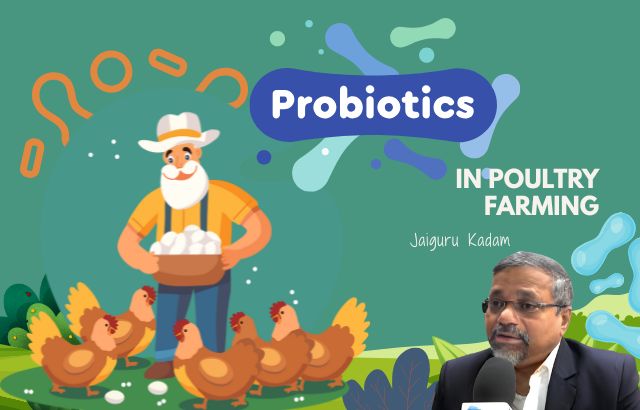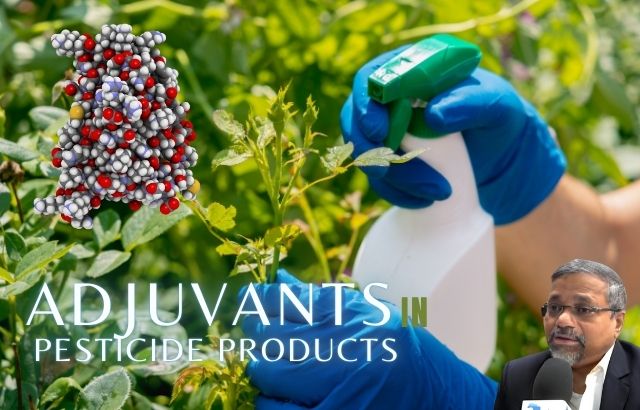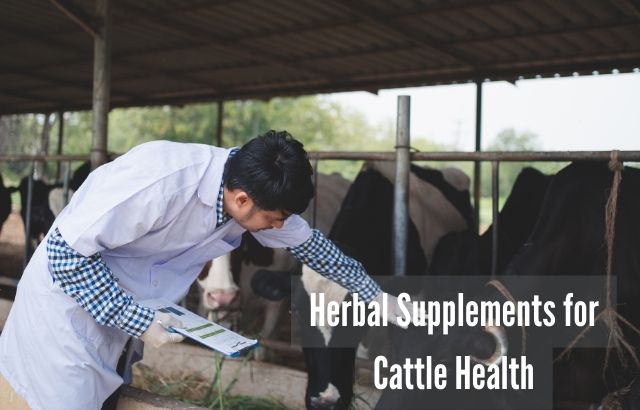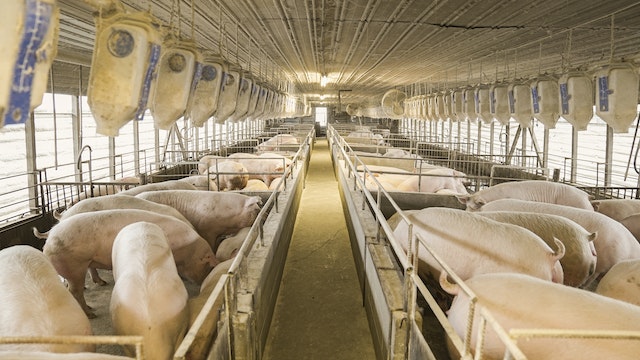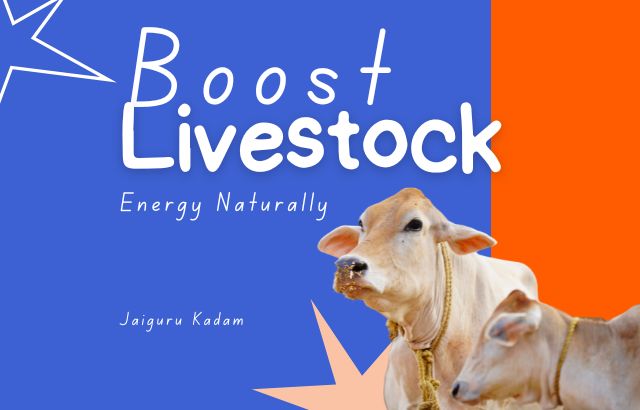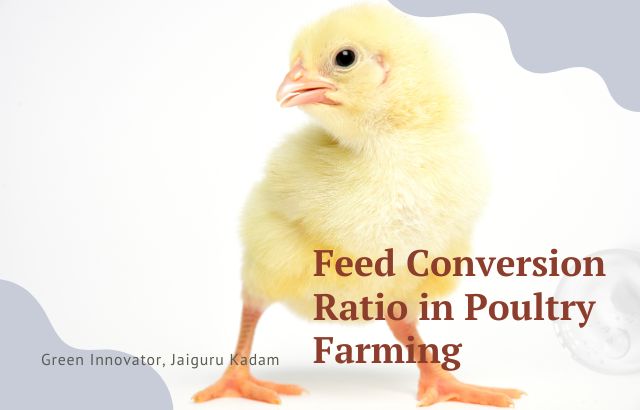In recent years, there has been a noticeable shift in the agricultural industry toward sustainability, animal welfare, and efficiency—with one of the most promising solutions being the use of probiotics in poultry farming. Probiotics, which are live microorganisms that confer health benefits to the host (in this case, poultry), have been gaining traction as a natural and effective alternative to traditional methods like antibiotics. This shift is not just a passing trend; the global probiotics market in poultry farming is growing at an impressive rate, with projections suggesting a 7.5% compound annual growth rate (CAGR) over the next several years.
Jaiguru Kadam, a recognized expert in agricultural innovation, has long championed probiotics for their multiple advantages, particularly in the realm of cost savings, health improvements, and sustainability. This blog post will explore the booming market for probiotics in poultry, the numbers driving this trend, and how probiotics are revolutionizing poultry health while offering cost savings in veterinary care.
The Probiotic Revolution in Poultry Farming

The adoption of probiotics in poultry farming is skyrocketing due to a combination of factors. Not only do probiotics improve gut health and reduce reliance on antibiotics, but they also contribute to environmentally sustainable farming practices. This is especially important given the rising concerns over antibiotic resistance and the environmental impact of traditional farming practices.
The global probiotics market in poultry is projected to grow at a 7.5% CAGR from 2023 to 2028. This growth is fueled by increased awareness about the health benefits of probiotics, consumer demand for healthier, antibiotic-free poultry, and the growing emphasis on sustainable agricultural practices. In fact, the global market for animal probiotics is expected to reach $1.5 billion by 2028, with poultry being one of the largest sectors driving this expansion.
Why Is Probiotic Use in Poultry Farming Gaining Traction?

Several factors contribute to the increasing adoption of probiotics in poultry farming:
- Rising Consumer Demand for Antibiotic-Free Meat: As consumers become more health-conscious, there is growing demand for poultry products that are free from antibiotics and other chemicals. Probiotics offer a natural solution to improve poultry health without the use of pharmaceuticals.
- Reducing Antibiotic Resistance: With the rising concerns over antibiotic resistance, many countries are implementing regulations that limit the use of antibiotics in animal farming. Probiotics offer a sustainable and safe alternative, ensuring the birds stay healthy while meeting regulatory standards.
- Improved Poultry Health and Productivity: Probiotics enhance gut health, improve digestion, boost immunity, and help poultry absorb more nutrients from feed. This leads to better overall health, improved growth rates, and higher productivity in the long run.
- Environmental Sustainability: Probiotics help reduce the need for antibiotics, thus contributing to lower environmental contamination and reducing the agricultural sector’s carbon footprint. Less need for antibiotics also means fewer residues in poultry meat, making it safer for human consumption.
Jaiguru Kadam’s Insights on Cost Savings in Veterinary Care with Probiotics

Jaiguru Kadam has been an advocate for cost-efficient and sustainable farming practices. One of the most compelling aspects of probiotics, according to Kadam, is their potential to dramatically reduce veterinary costs by minimizing the need for antibiotics and other medical interventions. Probiotics help enhance gut health and immunity, reducing the frequency of diseases and infections in poultry, which in turn decreases veterinary care expenses.
Here’s how probiotics contribute to cost savings:
- Reduced Antibiotic Use: By replacing antibiotics with probiotics, farmers can significantly reduce their veterinary bills. Probiotics naturally promote disease resistance, leading to fewer instances of illness and a reduced need for costly medications.
- Improved Disease Prevention: Probiotics help create a healthy gut environment that supports the immune system, reducing the risk of common poultry diseases like Salmonella, E. coli, and Coccidiosis. Preventing disease outbreaks means less money spent on treatments and better overall flock health.
- Enhanced Productivity: With better digestion and nutrient absorption, poultry are healthier and grow faster, leading to a more efficient production cycle. This translates to fewer health-related disruptions and lower veterinary costs.
Example Calculation: Savings on Vet Bills When Replacing Antibiotics with Probiotics

Let’s break down how probiotics can lead to savings on veterinary bills by replacing antibiotics. In this example, we’ll use a hypothetical large-scale poultry farm with 10,000 broilers.
Current Situation (Using Antibiotics):
- Veterinary costs for antibiotics: A typical poultry farm might spend around $0.50 per bird per treatment for antibiotics. Let’s assume the farm has to treat 10% of its flock for bacterial infections or other illnesses throughout the year.
- Total cost of antibiotics:
$0.50 x 10,000 birds x 10% = $500 spent annually on antibiotics.
Situation with Probiotics:
- Probiotic supplement cost: Probiotics typically cost $0.20 per bird per month for a standard feed supplement. Over the course of a year, that amounts to $2.40 per bird.
- Total cost of probiotics:
$2.40 x 10,000 birds = $24,000 spent annually on probiotics.
However, the key savings come from reduced veterinary visits, as probiotics improve gut health and prevent infections. Studies have shown that probiotics can reduce pathogenic bacterial infections by 20-30%, significantly reducing the need for antibiotics.
Let’s assume probiotics reduce the need for antibiotics by 50%:
- New antibiotic cost: $0.50 x 10,000 birds x 5% (reduced incidence) = $250.
Net Savings:
- Savings on veterinary costs: $500 (original cost) – $250 (new cost) = $250 savings.
- Additional savings: Probiotics not only save on antibiotic costs but also improve productivity by enhancing feed conversion, reducing mortality rates, and improving overall bird health, which can translate into further savings in terms of better growth rates and fewer health-related disruptions.
Practical Examples: The Success of Probiotics in Poultry Farms
- Cargill’s Probiotic Feed Solutions: Cargill, a leader in animal nutrition, has been incorporating probiotics into its poultry feed products. According to their internal reports, farmers using probiotic-enriched feed have seen a 10-15% reduction in veterinary costs, primarily due to fewer disease outbreaks and reduced antibiotic use. Their customers also report higher feed efficiency and healthier flocks, contributing to improved profitability.
- Poultry Farms in Europe: In Europe, where the use of antibiotics in animal farming is more heavily regulated, several large poultry farms have adopted probiotics to replace antibiotics. One notable farm in Germany reported a 20% reduction in antibiotic use and an 18% decrease in veterinary costs after switching to a probiotic regimen for their poultry. These savings were further bolstered by increased productivity and healthier birds.
- Indian Poultry Farms: In India, poultry farmers are increasingly adopting probiotics as part of their feed strategy. A poultry farm in Tamil Nadu, for example, switched from antibiotics to probiotics and reported a 30% decrease in vet bills, thanks to improved gut health, reduced disease outbreaks, and fewer antibiotic treatments. The farm also noticed faster growth rates and improved overall health among the birds, leading to higher profits.
The Future of Probiotics in Poultry Farming: A Sustainable Path Forward

As the global demand for poultry continues to grow and consumers increasingly demand healthier, antibiotic-free meat, the use of probiotics will only continue to expand. Jaiguru Kadam points out that probiotics represent a key green innovation in agriculture—offering sustainable, cost-effective, and health-promoting benefits that align with long-term industry goals.
With projected market growth of 7.5% CAGR, the future of probiotics in poultry looks bright. Probiotics offer an environmentally friendly solution to the challenges of modern poultry farming, reducing the need for antibiotics, improving animal health, and increasing cost savings in veterinary care. As more poultry farmers embrace this green revolution, the entire industry stands to benefit from healthier, more sustainable production.
Conclusion
The rise of probiotics in poultry farming represents a paradigm shift toward healthier, more sustainable, and cost-efficient farming practices. With a projected market growth of 7.5% CAGR, probiotics are becoming a cornerstone of the future of poultry health. Jaiguru Kadam’s insights underscore the potential for probiotics to reduce veterinary costs, improve bird health, and reduce the environmental footprint of poultry farming. As the trend continues to gain momentum, the poultry industry is on track for a healthier, more sustainable future.

